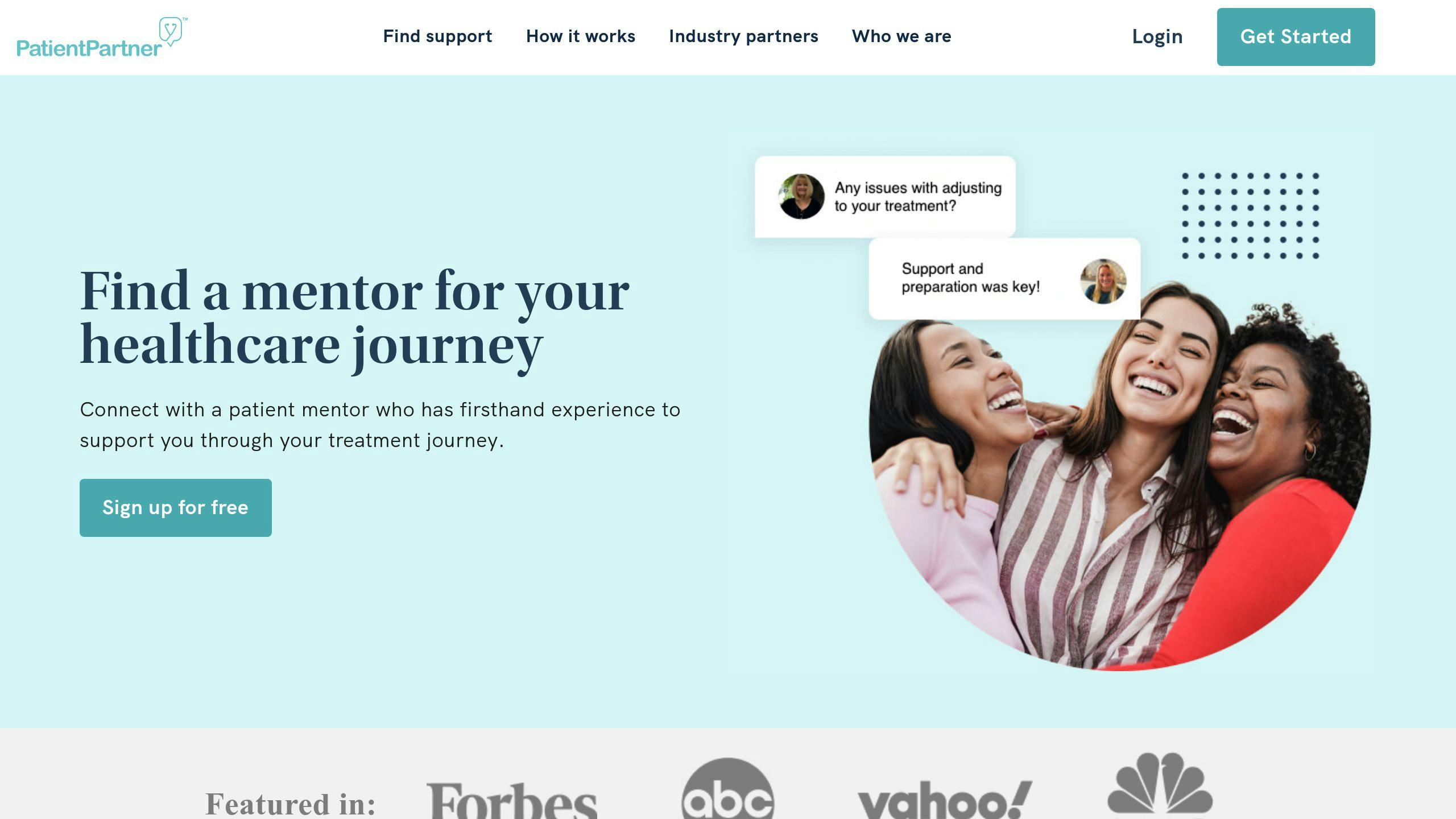How AI Enhances Patient Communication Platforms


Key Takeaways
How AI Enhances Patient Communication Platforms
AI is reshaping how healthcare providers communicate with patients by addressing common challenges like limited personalization, overburdened staff, and missed engagement opportunities. Here's how AI improves patient communication:
- Automation: AI tools handle routine tasks like appointment scheduling and reminders, freeing up staff for complex cases.
- Predictive Analytics: Analyzes patient data to anticipate needs and send timely, personalized messages.
- Natural Language Processing (NLP): Powers chatbots for real-time, empathetic communication and sentiment analysis.
- Personalization: Tailors educational content, care plans, and communication timing to individual patient needs.
These technologies improve patient engagement, adherence, and outcomes, but challenges like ensuring data privacy and balancing automation with human interaction remain critical.
Predictive Analytics for Patient Engagement
Using Data to Predict Patient Needs
Predictive analytics helps healthcare providers foresee patient needs by examining medical histories, treatment results, and communication preferences. AI-powered tools categorize patient groups based on data, allowing providers to automate and tailor their communication efforts effectively [1].
| Data Type | Purpose | Impact on Communication |
|---|---|---|
| Patient Data | Identify patterns and analyze success rates | Anticipate complications and fine-tune interventions |
| Patient Profiles | Personalize engagement and content | Send targeted messages through preferred channels |
Improving Outcomes with Timely Communication
Predictive analytics supports timely interventions, leading to better outcomes. For instance, AI tools used at Penn Medicine have shown they can detect critical conditions earlier than traditional approaches [5].
Healthcare providers leverage predictive analytics to enhance communication by fine-tuning timing, personalizing content, and addressing adherence challenges before they escalate.
"AI-driven patient engagement platforms can significantly improve patient adherence and reduce healthcare costs" [1].
By integrating predictive analytics into their systems, healthcare providers can deliver faster, more precise communication. Analyzing patient behavior and treatment patterns helps maintain strong connections with patients while efficiently managing resources.
While predictive analytics excels at anticipating needs, natural language processing plays a key role in offering real-time, empathetic communication that responds to patient emotions and concerns.
Natural Language Processing for Real-Time Communication
AI Chatbots in Patient Conversations
Natural Language Processing (NLP) has transformed how healthcare providers manage patient interactions, especially through AI-driven chatbots. These systems do more than just send automated replies - they understand context and intent, enabling more meaningful conversations.
Take Hyro, for example. This healthcare-focused AI platform uses its Adaptive Communications system to simplify tasks like scheduling, billing, registration, and answering patient questions. By automating these processes, Hyro's chatbots handle up to 85% of patient inquiries without needing human assistance [2]. This frees up healthcare staff to focus on more complex cases.
| Task Type | Benefits | Impact |
|---|---|---|
| Routine Tasks | Scheduling and support handled automatically | Faster service, happier patients |
| Clinical Support | Help with prescription refills and reminders | Better medication adherence |
| Patient Service | Available 24/7 | Reliable access to care |
Even with routine tasks, these chatbots use sentiment analysis to ensure interactions remain empathetic and responsive.
Understanding Patient Emotions with Sentiment Analysis
Sentiment analysis, powered by NLP, helps detect and address patient emotions during conversations. This technology not only streamlines communication but also strengthens the bond between patients and healthcare providers by offering timely, personalized responses.
By identifying concerns, adjusting tone, and monitoring satisfaction, sentiment analysis improves the overall experience for patients.
"AI-based smart routing can direct calls to the most appropriate agent or department, improving efficiency and patient experience" [2].
Personalizing Patient Experiences with AI
Tailoring Educational Content and Recommendations
AI is transforming how healthcare providers communicate with patients by using personal data to offer customized interactions. These systems analyze patient profiles to deliver information and recommendations that align with individual needs.
Take Arcadia Engage, for instance. This platform uses AI-driven segmentation to send targeted messages for care management programs, ensuring patients get information that directly relates to their health journey [1].
| Personalization Aspect | AI Capability | Patient Benefit |
|---|---|---|
| Content Delivery | Analyzes patient profiles and preferences | Delivers educational materials that are relevant to the individual |
| Treatment Plans | Assesses medical history and outcomes | Provides care recommendations tailored to the patient |
| Communication Timing | Tracks engagement patterns | Sends messages at optimal times for better patient response |
Adjusting Communication for Diverse Patients
AI goes beyond just tailoring content - it also adapts how information is communicated to suit a wide range of patient needs. By adjusting language complexity, cultural nuances, and delivery methods, AI ensures that interactions are more meaningful and accessible.
For example, healthcare providers use AI to bridge communication gaps across different demographics. By analyzing how patients engage with content, these systems refine their approach to improve understanding and encourage compliance with medical advice.
The healthcare predictive analytics market is expected to grow to $34.1 billion by 2030 [4], reflecting the increasing demand for personalized communication in healthcare. As AI tools become more advanced, they will play an even bigger role in helping providers engage patients and improve outcomes.
However, while AI offers these advantages, healthcare providers must also weigh the importance of maintaining privacy and preserving the human touch in patient care. Balancing these factors will be crucial as the technology continues to evolve.
Case Study: PatientPartner's Use of AI in Patient Support

How PatientPartner Combines AI and Mentorship
PatientPartner uses AI algorithms to match patients with mentors who share similar healthcare experiences, relying on personalized data analysis. This approach bridges the gap between technology and human connection, improving communication without losing the personal touch that's so crucial in healthcare.
| AI Component | Function | Impact |
|---|---|---|
| NLP | Matches mentors to patient needs | Aligns mentors with patient goals |
| Machine Learning | Analyzes patient data | Delivers more personalized support |
| Predictive Analytics | Times engagement effectively | Improves the success of interventions |
By blending advanced AI tools with human expertise, PatientPartner supports pharmaceutical and med-tech companies in helping patients adopt new treatments and medications more effectively [6].
Boosting Engagement and Adherence Through Mentorship
PatientPartner’s platform combines AI-powered matching with the human touch of mentorship, ensuring patients receive both precise and compassionate guidance [3].
Key strengths of the platform include:
- Using real-time data to refine how and when patients are engaged
- Offering education tailored to individual needs through mentors
"PatientPartner has helped pharmaceutical clients achieve higher patient retention rates and better treatment adherence by connecting patients with mentors who provide real-time support and guidance" [3].
The platform also prioritizes data security, complying with HIPAA and GDPR regulations through strong encryption and secure storage. This focus on privacy ensures that personalized support is delivered without compromising sensitive information.
PatientPartner shows how AI can amplify human mentorship, offering healthcare organizations a way to improve patient engagement and adherence. However, challenges such as maintaining compliance and balancing automation with personal interaction remain critical considerations.
sbb-itb-8f61039
Artificial Intelligence, Natural Language Processing, Predictive Analytics & Personalized Medicine
Challenges in AI-Driven Patient Communication
AI has the potential to transform patient communication, but its use comes with obstacles that need careful attention to ensure its effectiveness.
Compliance with HIPAA and GDPR
Using AI in patient communication requires navigating strict regulations like HIPAA and GDPR. Healthcare organizations must prioritize secure data handling through measures such as encryption, informed consent, and transparent activity logs. They also need to follow regional rules on data storage and adopt practices like de-identifying data for AI training. Strong data governance policies are essential to meet these demands.
Conducting regular privacy impact assessments can help organizations stay on track with compliance while using AI effectively. Striking the right balance between protecting patient data and delivering efficient, tailored communication is crucial.
Balancing Automation and Human Interaction
Finding the right mix of AI automation and personal interaction is a major hurdle in healthcare communication. While AI can improve efficiency, maintaining the human connection that patients value is equally important.
Tasks like appointment reminders or medication alerts can be automated, freeing up healthcare professionals to handle more complex or sensitive conversations. Proper staff training is key to making this work, ensuring teams know when to rely on AI and when to step in personally. Monitoring patient feedback regularly can help maintain this balance between technology and empathy.
The aim should be to use AI as a tool to support - not replace - human efforts. By letting AI handle routine tasks, healthcare providers can focus more on meaningful patient interactions, improving both care and efficiency.
Conclusion: AI's Future in Patient Communication
Healthcare leaders have the opportunity to reshape patient communication with AI by focusing on data-driven strategies and integrating advanced technology. By building strong data systems and using secure platforms that handle both structured and unstructured patient information while adhering to HIPAA regulations, organizations can provide more tailored and proactive care.
The healthcare predictive analytics market is expected to hit $34.1 billion by 2030, growing annually at a rate of 20.4% through that period [4]. This growth highlights the expanding influence of AI in healthcare communication and service delivery.
As AI continues to advance, it will improve personalization by aligning communications with individual patient needs, enhance predictive tools to address potential health concerns earlier, and integrate smoothly with current healthcare infrastructures. These developments will create a cohesive communication framework that benefits both patients and providers.
"AI-driven patient communication can significantly improve patient outcomes and adherence by providing timely, personalized, and efficient interactions. It helps in identifying care gaps and automating routine tasks, which are critical for enhancing patient engagement" [1][2].
However, the road to successful AI adoption comes with challenges like ensuring data security and finding the right balance between automation and human interaction. As healthcare evolves, AI will increasingly help close communication gaps between patients and providers, leading to improved health outcomes and more efficient care systems.
FAQs
What is the AI technology for hospitals?
AI in healthcare helps improve patient communication by combining several technologies that streamline care delivery:
| AI Component | Role and Benefits |
|---|---|
| Predictive Analytics | Helps forecast health events, enabling early interventions and personalized treatments |
| Natural Language Processing (NLP) | Facilitates smooth communication between patients and providers through conversational tools and emotion analysis |
| Machine Learning (ML) | Analyzes patient data to uncover patterns that improve treatment outcomes |
One example is Hyro's Adaptive Communications platform, which supports natural language interactions for tasks like scheduling appointments and refilling prescriptions [2]. This reduces the workload for call centers while maintaining high-quality support.
When used responsibly, these technologies can improve patient communication by combining automation with a human touch. Ensuring HIPAA compliance and using AI to assist - not replace - care providers is key to successful implementation.
Author



